How trappable are urban possums in Dunedin?
Cecilia Latham, Peter Sweetapple, Deborah Wilson, Grant Norbury, and David Latham
As more people in cities and towns get behind the predator free movement, understanding possums in urban environments is increasingly important. In a recent study from Manaaki Whenua, researchers set out to explore the “trappability” of possums in urban Dunedin.
Possums were captured, marked, tracked, and observed in six suburbs — Anderson’s Bay, Corstorphine, Helensburgh, Kenmure, Kew and St Clair.
Captured adults were fitted with a GPS tracking collar and ear tags in line with animal welfare guidelines before being released where they had been captured. Trail cameras were placed next to two different kinds of possum kill-traps — the Trapinator and AT220 to record encounters and interactions. The traps were wired open to prevent them from firing.
The information from the tracking collars and video cameras was combined to understand how trappable possums might be based on their different behaviours or personalities at the traps.
Information from GPS tracking collars was used to describe home ranges, habitat preferences, and how possums move through urban areas.
Trail cameras at unset kill-traps were used to see which possums encountered a device and whether they interacted with it.
How do possums behave in urban Dunedin?
The average home range for a possum in urban Dunedin was 6.6 hectares — or 6 and a half rugby fields. This was nearly twice as large as previous estimate from Dunedin of 3.5 hectares.
Possums in areas with joined up patches of native forest had smaller home ranges, whereas those in areas with more houses and fragmented forest had bigger home ranges. Possums in these areas likely had to travel further to find high-quality food.
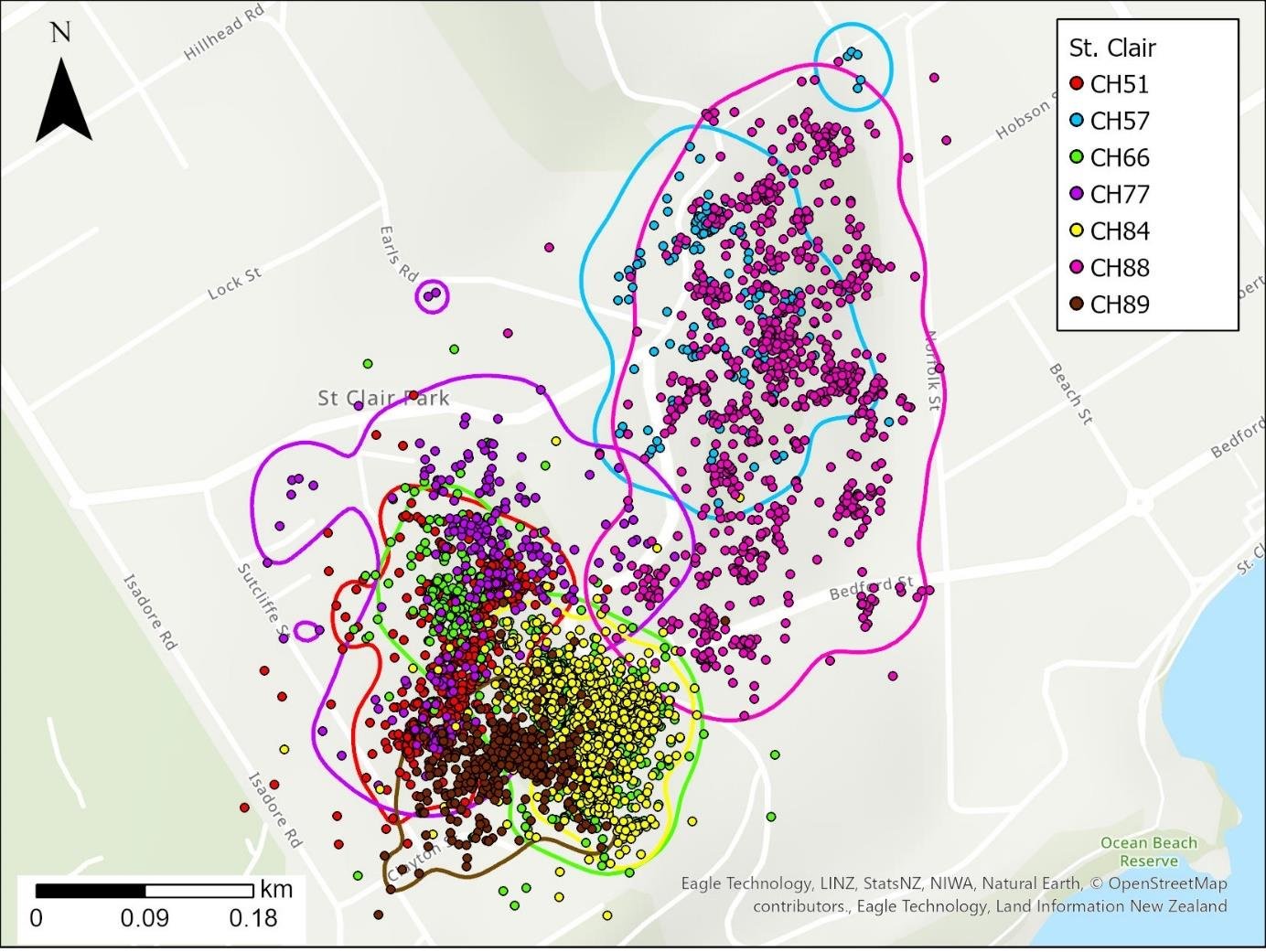
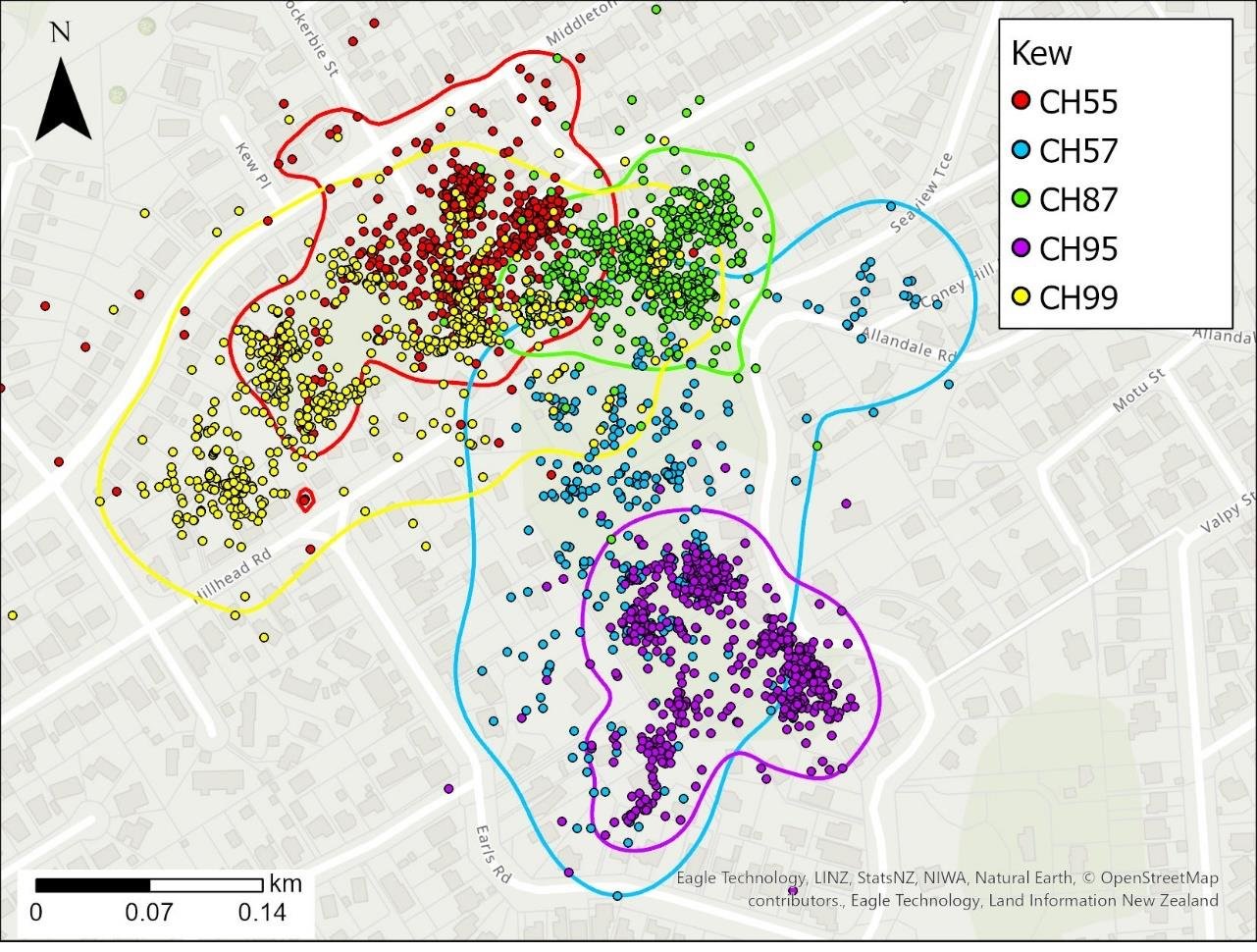
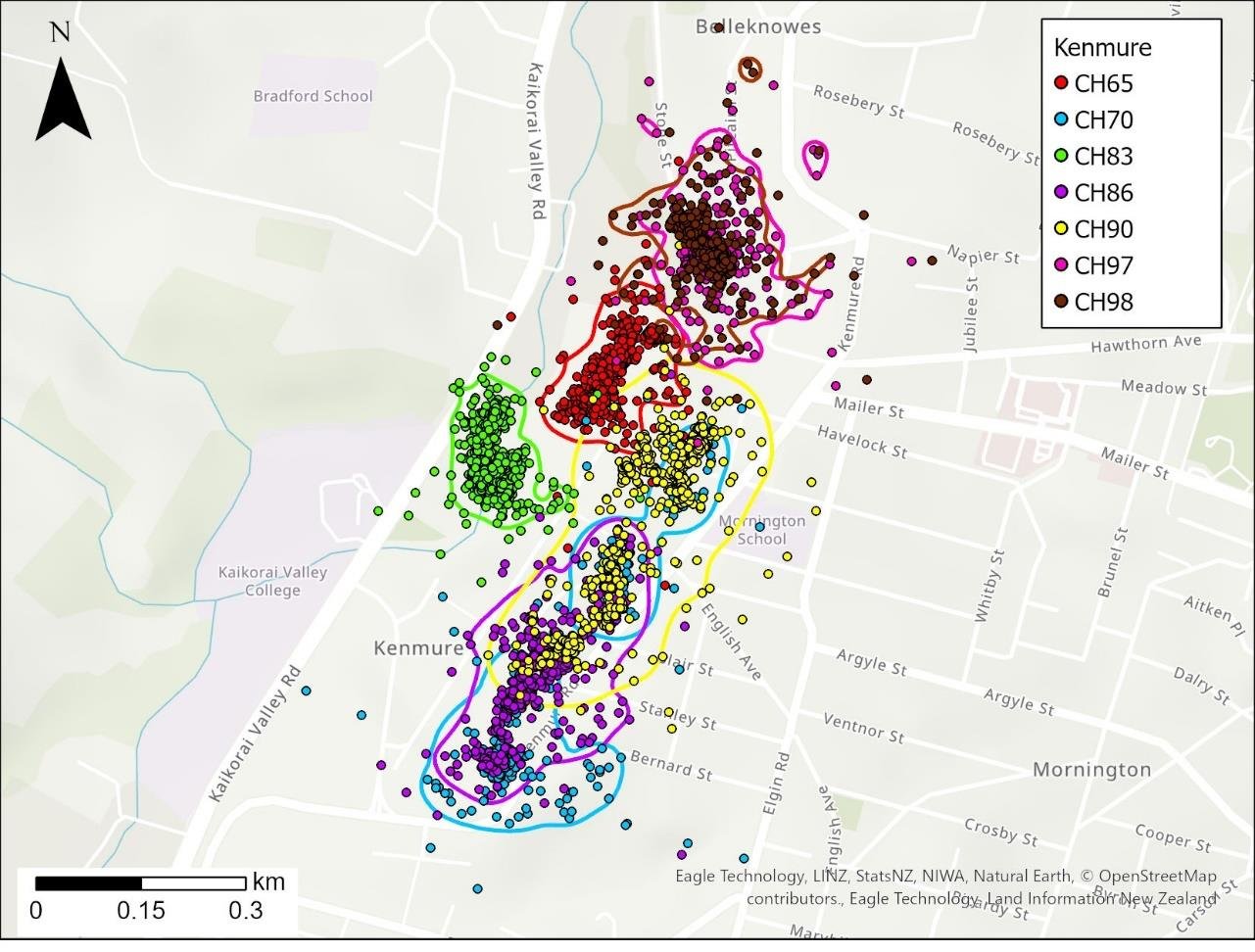
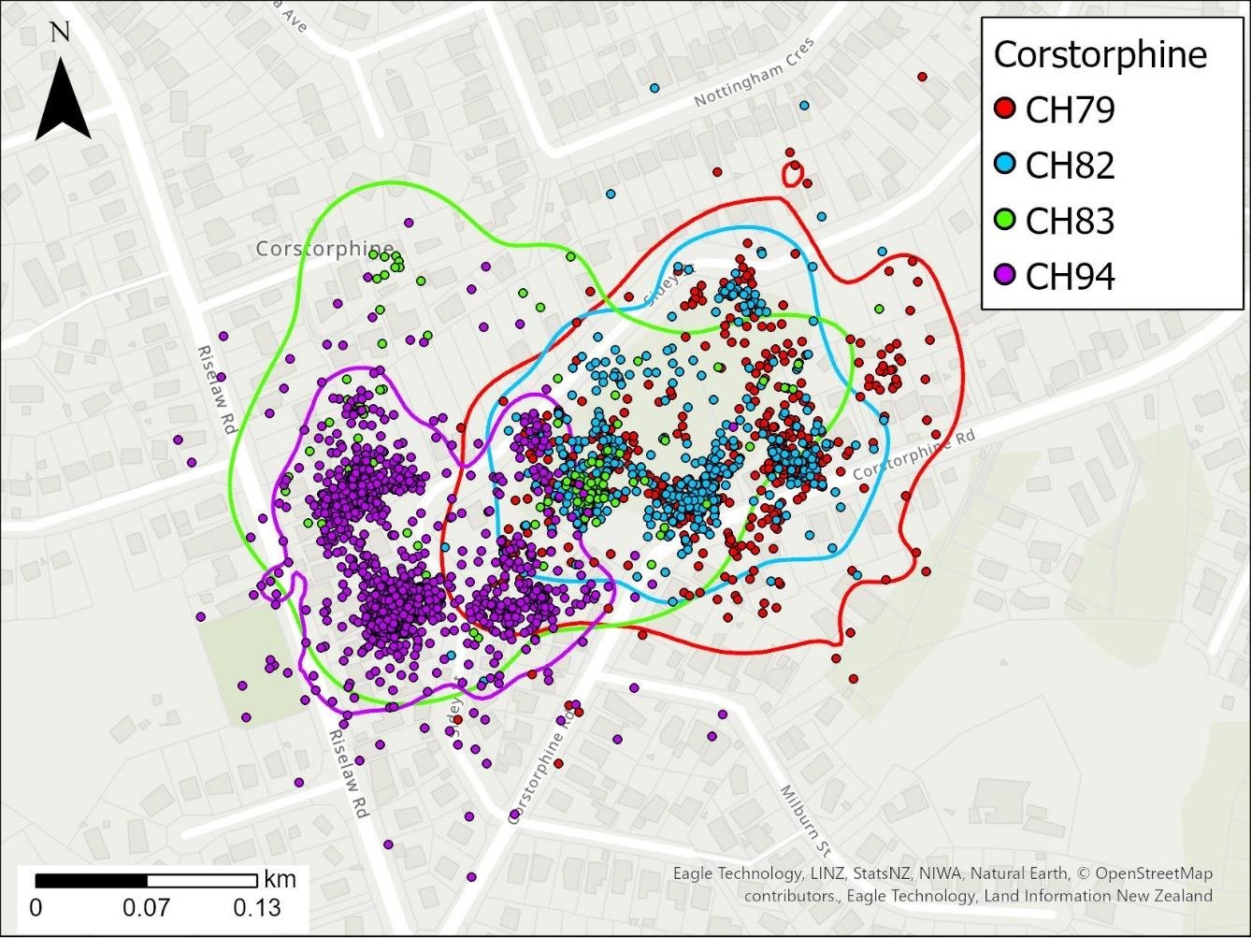
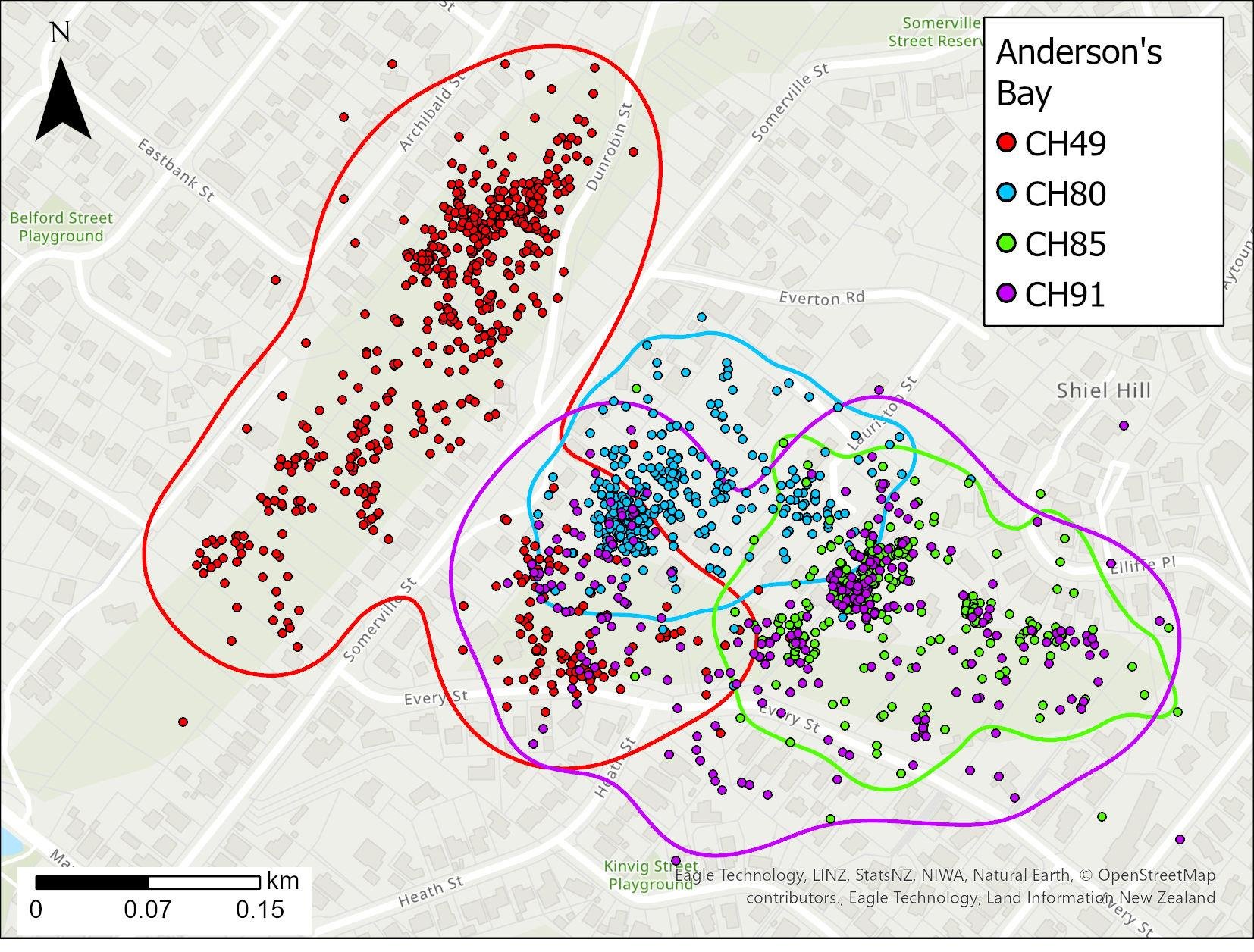
Two thirds of possums had an approximately circular home range, whereas one third had more elliptical ranges and included patches of forest that bordered roads.
Individual possums moved a mean distance of 528 metres each night, though the shortest distance recorded in one night was 70 metres and the longest 1.5 kilometres.
How did possums interact with traps?
Most of the possums wearing a collar were seen on cameras placed at devices. The cameras also showed 1182 nightly encounters with devices by uncollared possums. For both collared and uncollared animals, 40% of encounters resulted in an interaction with the trap.
28 out of 30 possums wearing a collar encountered a trap and 40% of the nightly encounters resulted in an interaction.
Possums were more likely to encounter a Trapinator, but interactions with the AT220 were more likely once a possum had encountered it.
Possums were more likely to encounter a Trapinator than an AT220. Both traps have a white plastic casing intended as a visual lure, but used different types of food lure (aniseed possum dough for the Trapinator and Mayonnaise for the AT220).
Although animals were more likely to find the Trapinator, the chance that a possum would interact with the encountered device was higher for the AT220. This may be due to the metal grill design of AT220s which possums feel more comfortable exploring. Another possibility is that, once a possum finds the AT220, the mayonnaise lure is more tempting than the aniseed possum dough.
Recommendations
Researchers included recommendations for Predator Free Dunedin to incorporate this study into its work to eradicate possums from the wider Dunedin area. These are also applicable for other groups carrying out possum control in urban areas.
Using the parameters and relationships derived from this study, a trap layout to achieve possum eradication in urban Dunedin could be designed using the individual-based model developed by Warburton and Gormley (2015) and Gormley and Warburton (2020).
Further exploration of information acquired as part of this study could be used to assess fine-scale habitat selection by possums in urban Dunedin. This would increase our understanding of what resources and habitats are valued by possums to inform targeted control strategies in urban areas.
Manufacturers of the kill traps assessed (Trapinator and AT220) should be informed of the results from this study, as they may inform future designs of these devices aimed at increasing encounters (AT220) and interactions (Trapinators).
Media
Let’s see where you’re going (Otago Daily Times, 23 June 2021).
Publications
Estimating trappability of the common brushtail possums in an urban environment (October 2021). M Cecilia Latham, Peter J Sweetapple, Deborah J Wilson, Grant L Norbury, A David M Latham.




